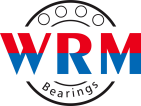
How to maintain bearings.
Proper maintenance is important to ensure the longevity and optimal performance of bearings. Here are some steps to maintain bearings:
1. Keep bearings clean: Dirt and debris can cause damage to bearings, so it’s important to keep them clean. Use a soft cloth or brush to remove any dirt or debris from the bearing surfaces.
2. Lubricate bearings: Proper lubrication is essential to reduce friction and wear on bearings. Use the recommended lubricant and apply it according to the manufacturer’s instructions.
3. Inspect bearings regularly: Regular inspections can help identify any signs of wear or damage to the bearings. Look for signs of corrosion, pitting, or cracks.
4. Replace damaged bearings: If a bearing is damaged or worn, it should be replaced immediately. Continuing to use a damaged bearing can cause further damage to the equipment and potentially cause safety hazards.
5. Store bearings properly: If bearings are not going to be used immediately, they should be stored properly. Store them in a clean, dry, and cool environment, and protect them from dust and moisture.
6. Handle bearings with care: When handling bearings, be careful not to drop or damage them. Use proper tools and techniques to install and remove bearings.
By following these steps, you can ensure the longevity and optimal performance of bearings, reducing the risk of equipment failure and downtime.

